HOSTED BY: 1 AIR TRAVEL
For many travelers, recent weeks have brought back memories of last year’s air travel frustration.
The summer travel season did start out strong, with U.S.-based airlines canceling a mere 0.6% of flights over Memorial Day weekend, according to data from flight-tracking site FlightAware.
But flyers got a renewed taste of chaos during the last week of June. Air travelers saw thousands of flights delayed and canceled, led by mass disruptions to United Airlines’ operation at Newark Liberty International Airport (EWR) in the midst of severe weather and other constraints airline executives recently detailed.
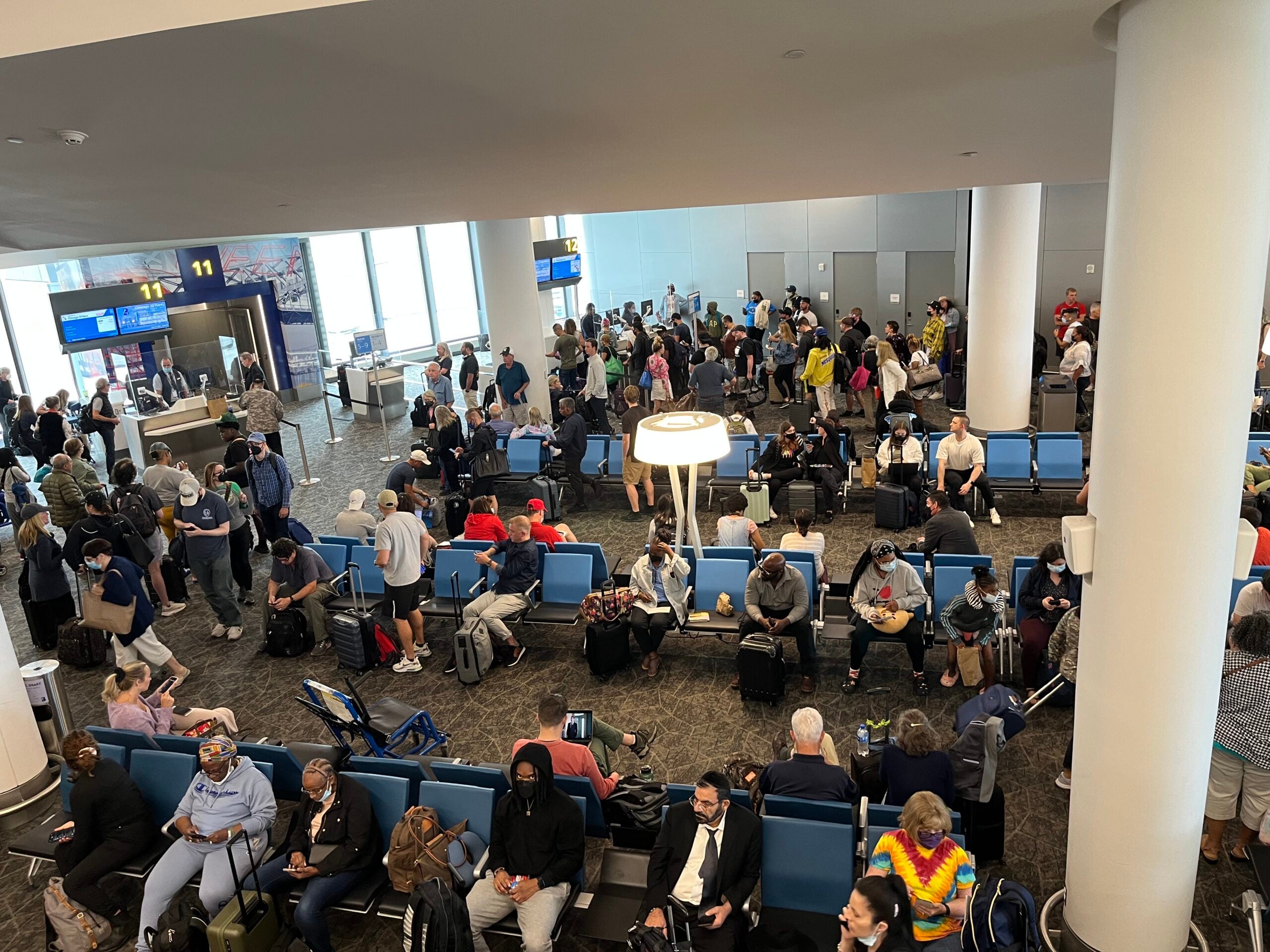
Large crowds fill Terminal B at New York’s LaGuardia Airport (LGA) on June 16, 2022. SEAN CUDAHY/THE POINTS GUY
The problems have stabilized a bit in recent weeks, though perhaps not to the extent travelers might have hoped. Over the course of July, U.S.-based carriers’ cancellation rates collectively hovered above 2%, FlightAware data showed.
It’s an improvement from both the late-June meltdown and last year’s worst stretches, but notably worse than the earlier months of 2023.
It’s a similar story for delays: They plagued more than a quarter of U.S. airlines’ flights in July.
Taking those numbers into account, along with the challenges posed by pesky summer thunderstorms and a lingering shortage of air traffic controllers, it remains a good time to plan ahead and think about what you’d do in the event things don’t go smoothly.
That’s especially true considering the recent inspector general’s report that shed light on the scope of the air traffic control staffing shortage and the uphill climb the Federal Aviation Administration faces to address it.
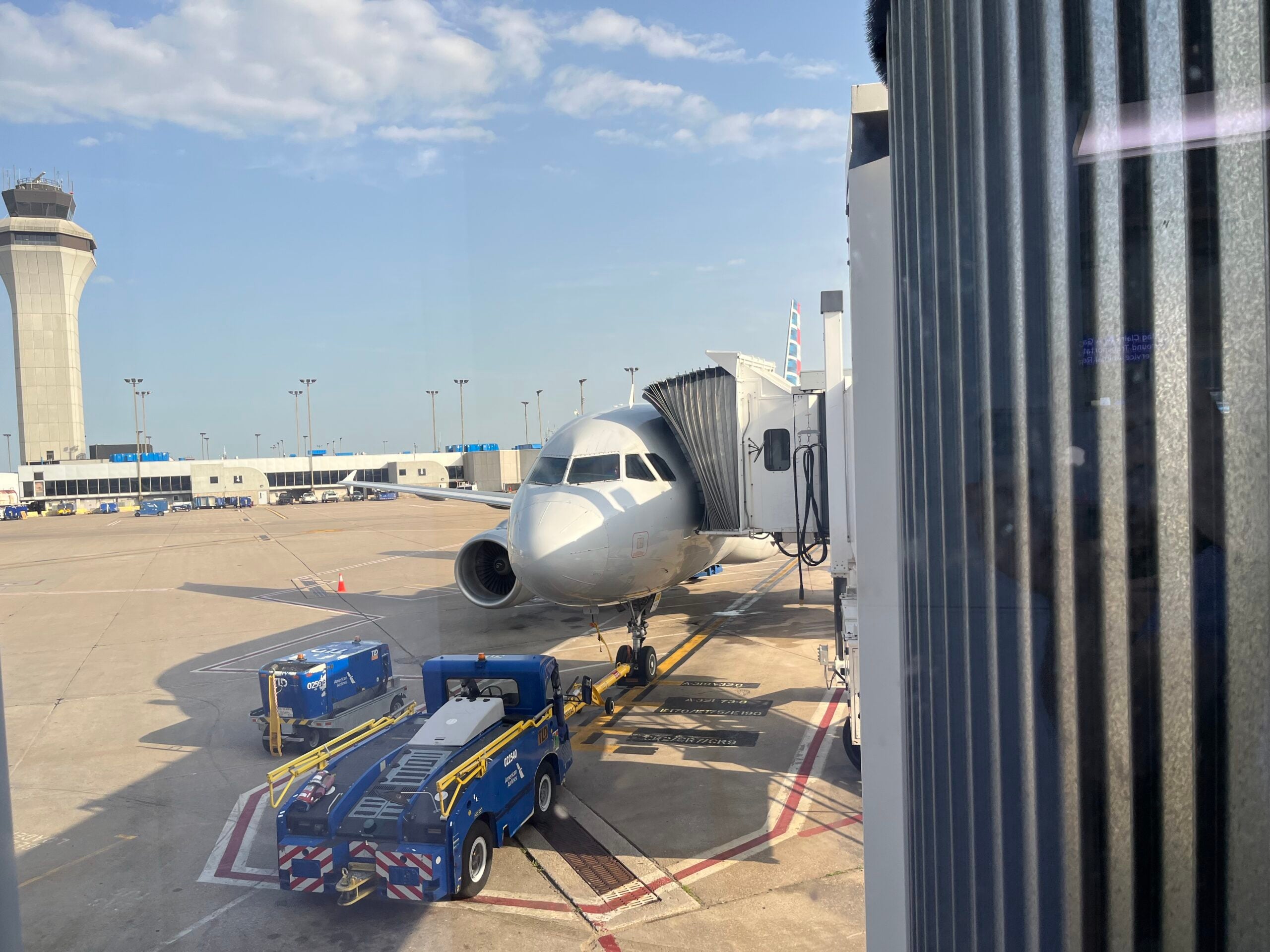
Preparing to board at St. Louis Lambert International Airport (STL). SEAN CUDAHY/THE POINTS GUY
Every leg of my trip got canceled or delayed
Just about all of us that flew with some regularity in 2022 came away with a horror story of sorts, whether it was being stranded over the holidays or losing luggage last summer.
For me, my most poignant memory came at the height of last summer’s challenges. On an assignment for TPG last June, I saw every flight on my two-day, four-leg trip canceled or significantly delayed.
The trip, which came right as the Biden administration began to really ramp up its public pressure campaign on airlines, had a little bit of everything.
There were seemingly unexplained cancellations and rolling delays caused by thunderstorms. There was a multihour wait on the tarmac fueled by air traffic control challenges during a connection at New York’s LaGuardia Airport (LGA); the photo below, which I snapped through a plane’s window, shows a handful of the 50-plus planes that were awaiting takeoff at one point.
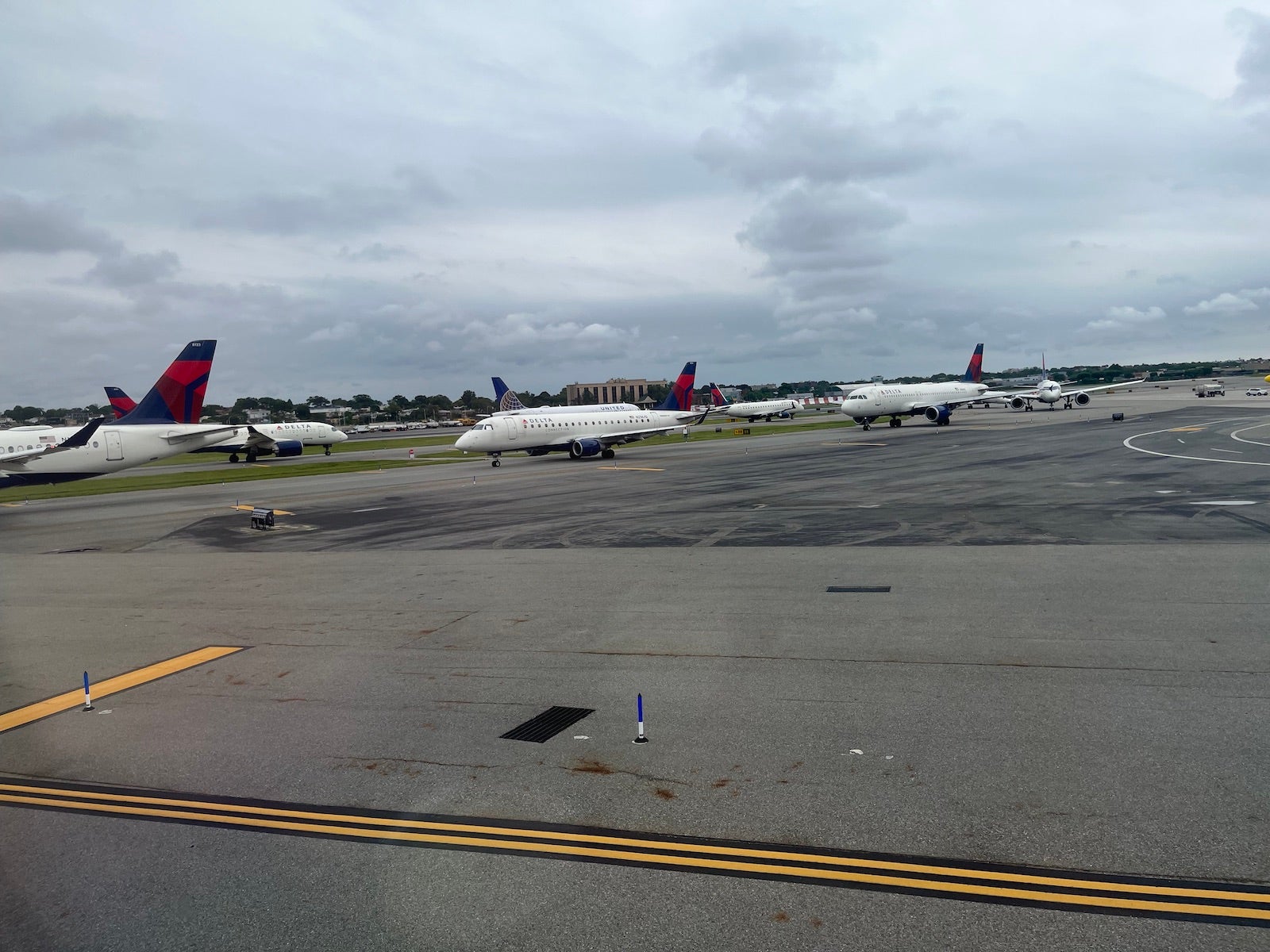
Taxiway congestion at New York’s LaGuardia Airport (LGA) on June 16, 2022. SEAN CUDAHY/THE POINTS GUY
A return to the gate, an unexpected night in New York City, a second doomed attempt to depart LaGuardia and a race across town to John F. Kennedy International Airport (JFK) to hop on a flight standby followed.
I certainly wasn’t alone — tens of thousands of flights were canceled in the U.S. during that quite unforgettable month for air travel.
And though airlines maintain they now have more staff than at any other point in the last two decades — a key, they say, to solving many of their challenges in 2022 — the last month has reminded us that being prepared for the unexpected remains a top priority.
In many cases, your easiest answer lies in the palm of your hand.
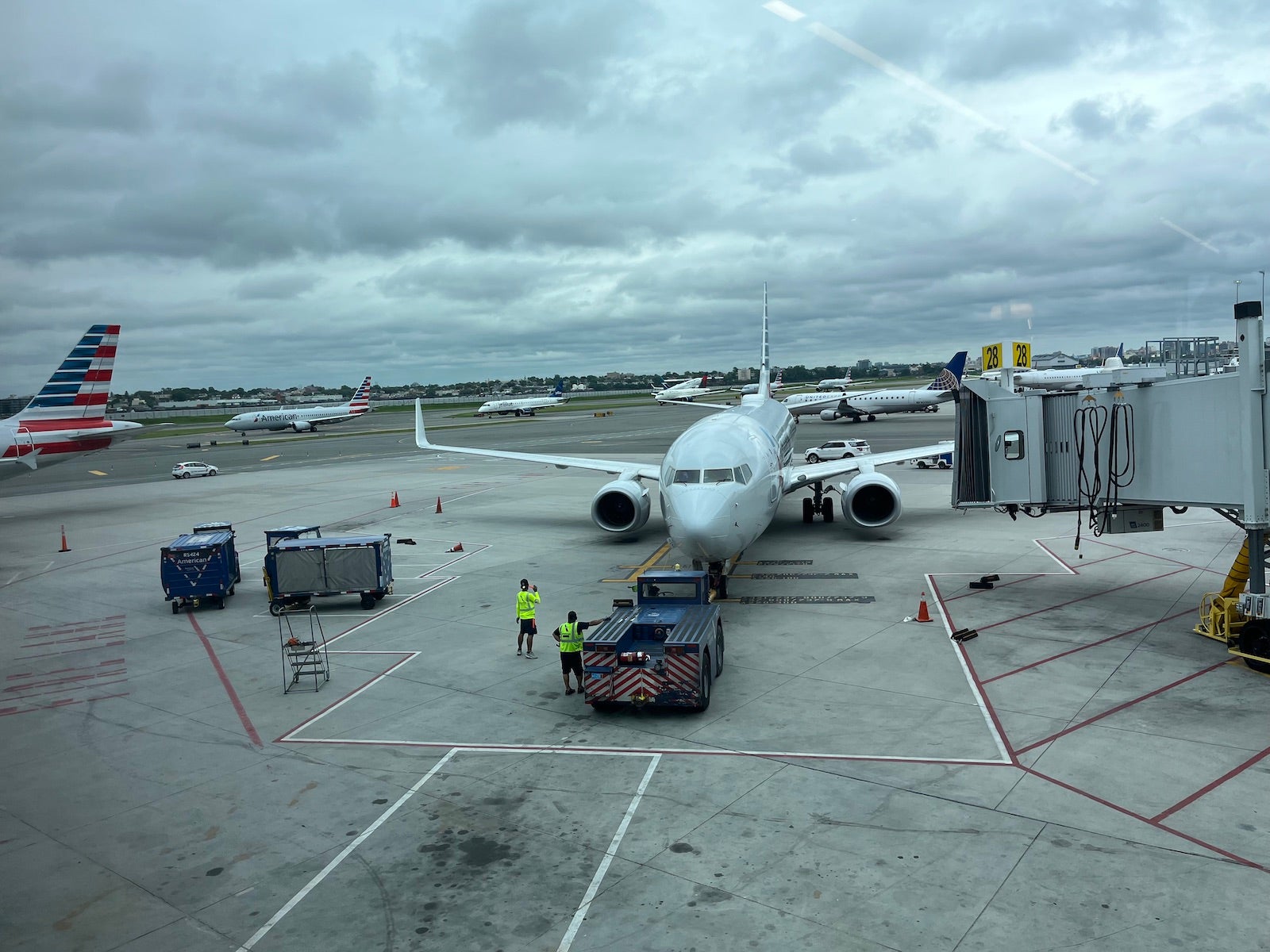
SEAN CUDAHY/THE POINTS GUY
Planning ahead for air travel meltdowns
Though I was unquestionably frustrated last summer as I sat in seven cabs or Ubers, five airports, five planes and one hotel over that three-day period, it proved to be a valuable, firsthand window into navigating those rocky weeks for air travel we’ve seen crop up from time to time over the last couple of years (hopefully, they’re mostly behind us).
Here are a few takeaways I came away with:
Related: 7 mistakes to avoid on your next trip
The airline’s app is often the quickest and easiest solution
On several occasions during that trip, when my flight got canceled I was able to pull up the airline app and rebook myself on another flight within seconds. This is an option you’ll have with most airlines.
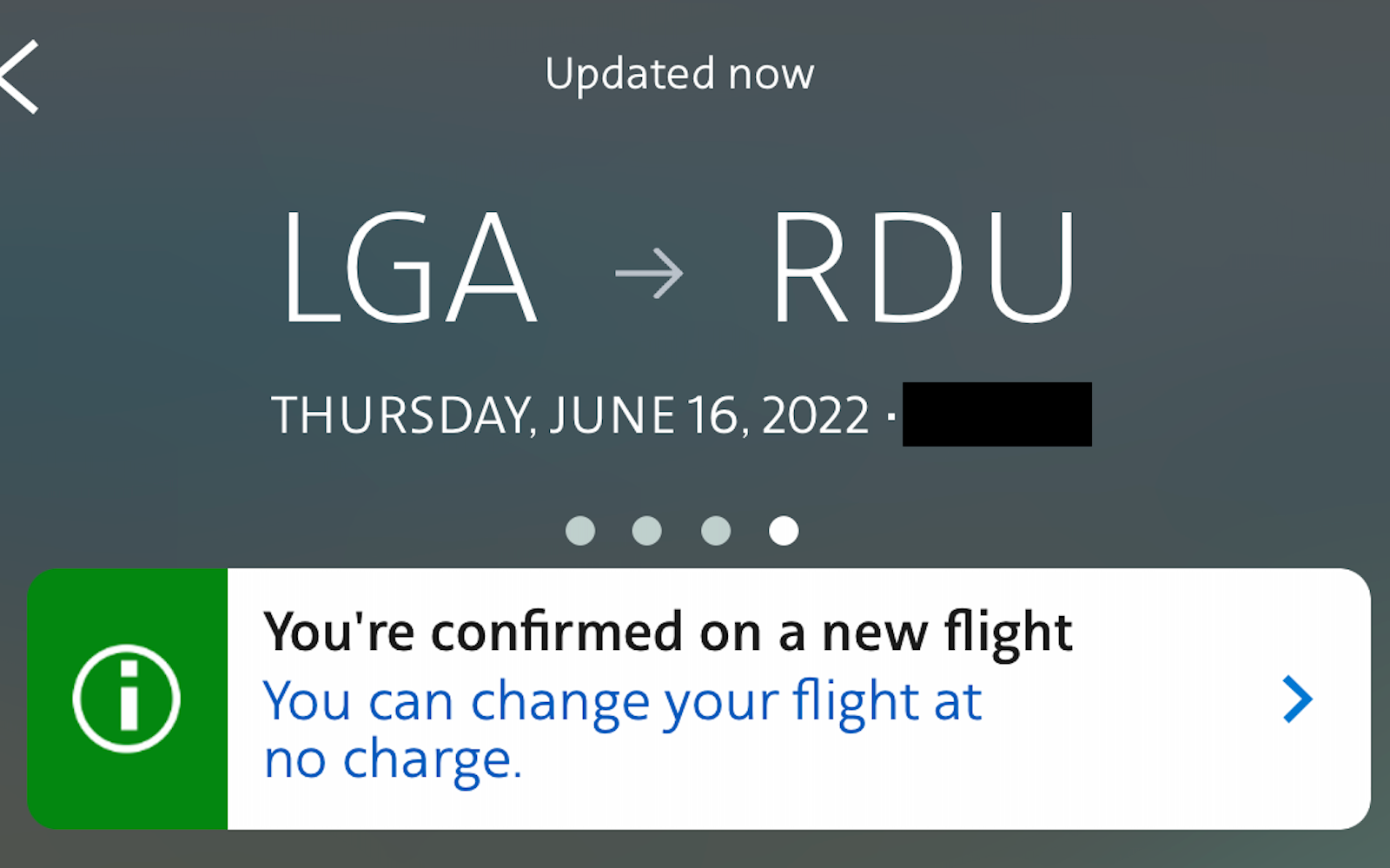
AMERICAN AIRLINES
In a lot of cases you can bypass the multihour waits on the phone or the long lines at customer service desks. Using your app, you may be able to book yourself an entirely new itinerary, choose your seat and download your boarding pass with just a couple of taps.
Related: What to do when your flight is delayed or canceled
When rebooking on the app, lock in a flight but then keep looking
Depending on the circumstances and the type of ticket you booked, you may be able to make multiple changes to your itinerary when your flight gets delayed or canceled.
This can be handy if the first rebooking option you find isn’t ideal. Typically, my strategy is to book something — anything — that would at least get me where I needed to be in a reasonable time frame.
Once I have that flight confirmed, I’ll refresh the page and spend a little more time searching for a better option. Keep in mind that as other travelers rebook, seats on planes will open up and close pretty rapidly, so your choices may continually change.
Now, this isn’t to say you’ll always have great options.
Particularly when cascading disruptions cause travelers to look for new flights en masse, the choices can be extremely limited.
As former airline executive and aviation consultant Robert Mann explained, when this happens, “There’s very few places to put people” at that point.
If you need a human, try to chat with them online
Sometimes, there’s no avoiding it: We need a human customer service agent to assist us. But as travelers often find during mass disruptions, getting through to a representative by phone can involve an hourslong wait.
Another option you can try in this situation: See if you can chat with an agent online. I’ve found the wait can be much shorter, and they can often solve most of the problems an agent could via phone.
As always, have your trip confirmation handy (in fact, I’ll often send it to the agent before telling them anything about my situation; there’s really nothing they can do until they have the reservation pulled up).
Know your rights to refunds, meals, hotels and more
Study up on your rights as a passenger before your next trip. For instance, if your flight is canceled or significantly delayed and you ultimately choose not to fly, you’re entitled to a refund under U.S. Department of Transportation policy.
The agency also now has a dashboard that lays out which airlines provide guarantees for things like meals, hotel coverage and ground transportation reimbursement — though typically, passengers can only recover these costs when the flight disruptions are the airline’s responsibility (think maintenance and airline staffing, but not weather).
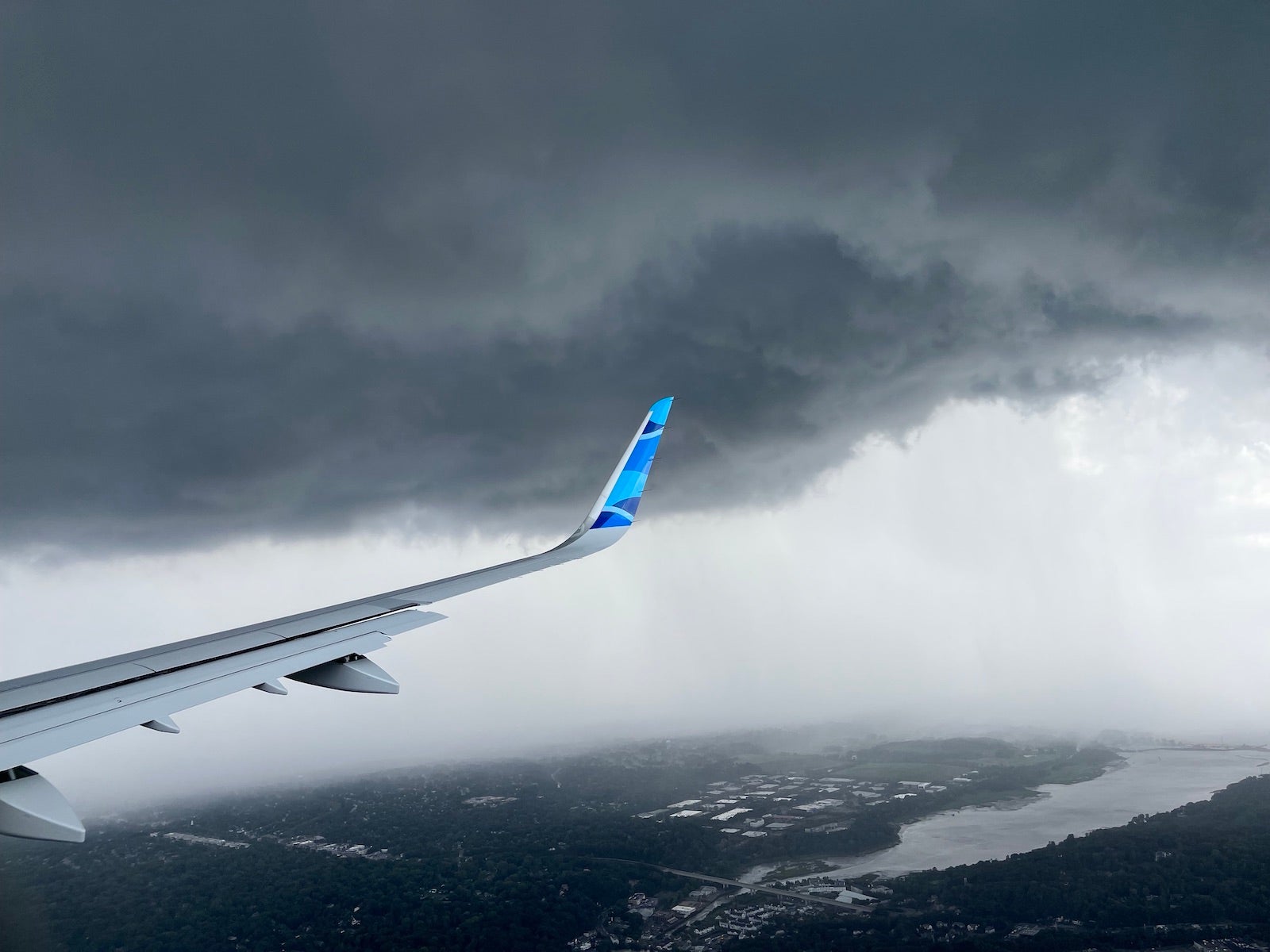
A JetBlue aircraft lands at John F. Kennedy International Airport (JFK) in the midst of a summer afternoon storm. SEAN CUDAHY/THE POINTS GUY
Consider a credit card with trip insurance
Unfortunately, whenever you book an itinerary with a layover, there is an outside chance you could get stranded in your connecting city or destination if things go wrong.
During my trip last summer, for instance, I incurred well over $100 in ground transportation expenses in New York, ate dinner and breakfast while stuck, and spent a night in a hotel. (Fortunately, since I was traveling on TPG business, the company reimbursed me.)
However, you could run into similar unplanned expenses for food, lodging and travel to and from the airport on a personal trip.
This is where a travel credit card with protections for trip delay and interruption can come in handy, helping to offset the costs of travel disruptions.
Keep an eye on the incoming plane
Whether you’re using a browser, the departures and arrivals board at the airport or an airline’s app, there are plenty of ways to keep an eye on the plane that will ultimately carry you to your destination.
If you’re flying on United from Dulles International Airport (IAD) to O’Hare International Airport (ORD), but you notice your plane is delayed on the ground in Newark, it’s an early warning sign you could also run into trouble.
“If you do see that, it’s time for your hair to stand up a little bit and think about what your options may be,” Mann explained.
It’s not to say you’re doomed, but it could be a good hint to start planning ahead.
Search for the silver lining along the way
As Mann pointed out, these flight delays can hamper travelers’ plans for vacations, weddings, graduations and other events for which travelers have long saved money and planned.
“That just means their trips are ruined,” he said of those meltdowns that can trigger multiday waits for a new flight.
It’s a sentiment with which I certainly empathize, though I hope travelers can find some ways to still enjoy themselves along the way.
For instance, my unexpected stay in New York allowed me to connect with some TPG colleagues I hadn’t, to that point, met in person.
And, I got to check out Hyatt’s beautiful Andaz 5th Avenue Hotel in Manhattan, a stay punctuated by the property’s incredible breakfast offerings.

SEAN CUDAHY/THE POINTS GUY

SEAN CUDAHY/THE POINTS GUY

SEAN CUDAHY/THE POINTS GUY
These types of travel disruptions have been a reality for the last couple of years. On top of hoping the meltdowns are fully behind us, a little preparedness and patience can go a long way toward navigating these situations.
Title: Tips for when you get caught in a travel mess: Here’s how I avoid waiting on hold to rebook my flight
Sourced From: thepointsguy.com/news/every-flight-disrupted-on-my-trip/
Published Date: Fri, 04 Aug 2023 15:30:19 +0000
No comments:
Post a Comment